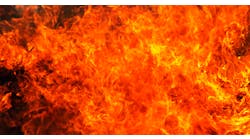SinterCast AB reported a -17% drop in annualized series production volume for compacted graphite iron during the third quarter of 2024, finishing the July-September period at 3.5 million “engine equivalents,” or about 175,000 metric tons. The decline – which followed more than three years of consecutive quarterly increases in annualized CGI production for SinterCast – was apparently due to the end of a high-volume series production program during September, summer shutdowns for several customers, and falling demand for commercial vehicles in Europe and North America.
During Q3, more than 95% of SinterCast series production involved commercial vehicles, pick-ups, and off-road vehicles.
CGI is a lightweight ferrous material gaining acceptance by automotive and industrial engine manufacturers for its high tensile strength, stiffness, and fatigue strength that is greater than gray iron or aluminum.
One “engine equivalent” represents 50 kg of CGI output, roughly the weight of a passenger vehicle engine block.
Despite the drop in 3Q output, SinterCast reported that January-September’s annualized series production total for CGI was 3.8 million engine equivalents (190,000 metric tons), a year-over-year improvement of 2.7%.
Stockholm-based SinterCast licenses the most widely used process control technology for compacted graphite iron, in use for series production by foundries and automotive manufacturers in 12 countries.
SinterCast explained that its near-term forecast calls for continued market weakness, but it pointed to continuing ramp-up of CGI production for Traton Group (Scania, MAN, International, Volkswagen Truck & Bus, etc.) and the start of production of a new 13-liter cylinder block for China’s First Automotive Works, as factors pointing toward an annualized production volume of 5 million engine equivalents (250,000 metric tons) before the end of 2026.









